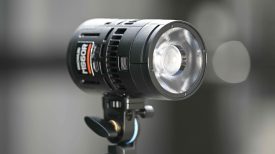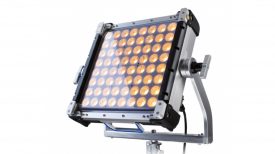By technical editor Matt Allard:
First we had a bounty of new cameras wash up in a treasure chest on the shores of digital beach – now some more crystal jewels have appeared in the form of lenses. I know I have said this a million times (or at least 993,000), but good glass really is a wise investment. It holds and in some cases exceeds its original value. The digital pirates of today should liken good glass to gold, because it really is a much better use of your money than buying a new camera every six months.
In saying that, you obviously need a good camera to get the maximum benefit from good glass. You might have the finest sails money can buy but you need a good boat behind it. Finally, there’s the Captain (if you’re not following the analogy: that’s you). How a lens works has not really changed since Blackbeard was sailing the seven seas… design has improved, but the fundamentals of how it works remain the same. You can take 30- or 40-year-old lenses and put them on today’s cinema cameras and get fantastic results.
These are a few of the new offerings that have arrived or been announced in recent weeks which I think will interest the large sensor video camera or DSLR shooter:
Voigtländer Ultron F1.8/21 mm VM
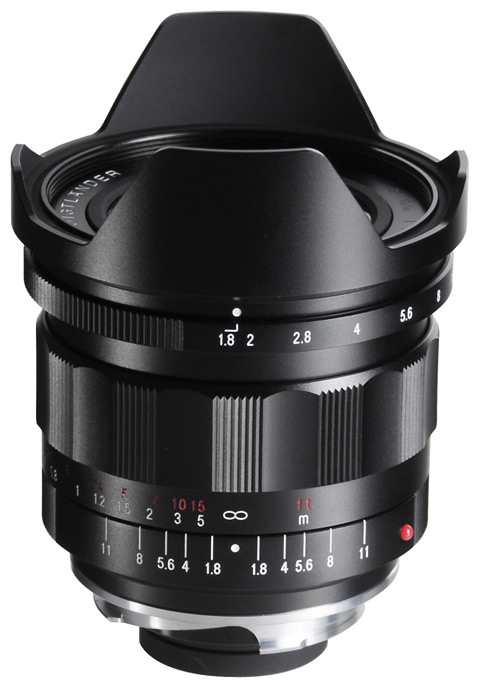
This is an interesting one: a 21mm wide angle with a fast aperture of f1.8. It is Leica M-mount but very easy to adapt to Sony NEX and M4/3 cameras using inexpensive adaptors. It features 13 elements in 11 groups, takes a 58mm filter, weighs just over 400gm and has full manual aperture control. It will be available in 2013 for 1150 Euros (about $1500US) This is potentially a very nice lens on a full frame camera, works out to be about 50mm on a Blackmagic Design Cinema Camera and it will also be quite a nice mid/wide lens on a Super 35mm camera like the FS700. (Other great lenses the company makes include the 50mm f1.1, 35mm f1.4, 28mm f2 and the ultra wide 15mm f4.5).
MS-Optical Sonnetar 50/1.1 for Leica M
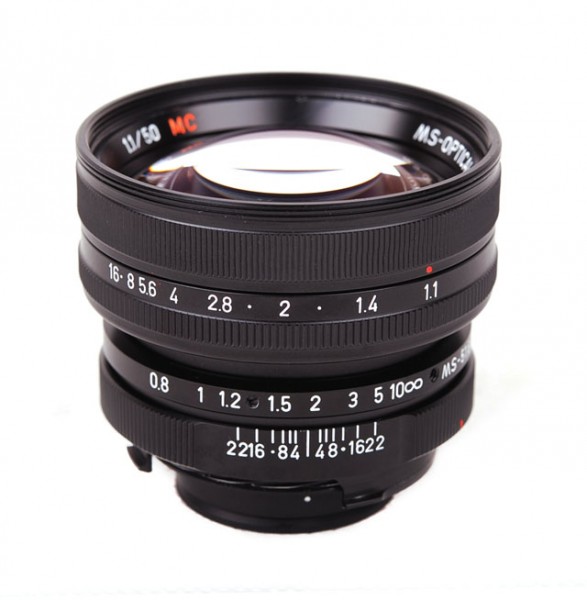
This is another boutique-style lens made by legendary Japanese designer Miyazaki-san in his custom workshop just outside Tokyo (I hope to meet him on my next trip).
He has previously made the super small 35mm f3.5 and 28mm f4 Perar lenses. This is the third M-mount lens he has created, designed and manufactured. It is no mean feat doing all this by yourself – he is truly a very talented man.
The 50mm f1.1 Sonnetar, technically a 51.7mm f1.163 lens, is based on the famous Sonnar design invented by Zeiss in the mid-twenties. Miyazaki-san has created a completely new lens design that not only features a superfast f1.1 initial aperture, but is also hardly larger than a contemporary Leica Summicron-M 35mm f2 lens.
The lens features multi-coated tantalum glass and a circular German-made 14-blade aperture mechanism and weighs in at only 190 grams. Additionally, the aperture ring has no clicks, offering extremely precise aperture control. According to some people who have used the lens it has a speed-vs-sharpness sweet spot at around f1.6, being rather soft at f1.1 and getting gradually sharper from f2 onwards. This lens will retail for about $1000US. You will have to wait quite awhile to get one, though, as he can only make limited numbers. I’ve picked out this one not because it may be amazing value for money or the sharpest lens out there, but because it is a chance to own something unique and likely to hold its value long term. I am also sure that it is probably an outstanding lens given his stellar reputation for producing beautiful optics. You can read more about it here at Japan Camera Hunter.
Samyang/Rokinon Cine 35mm T1.5 Lens, Cine 24mm T1.5, Cine 14mm T3.1, Cine 8mm T1.5
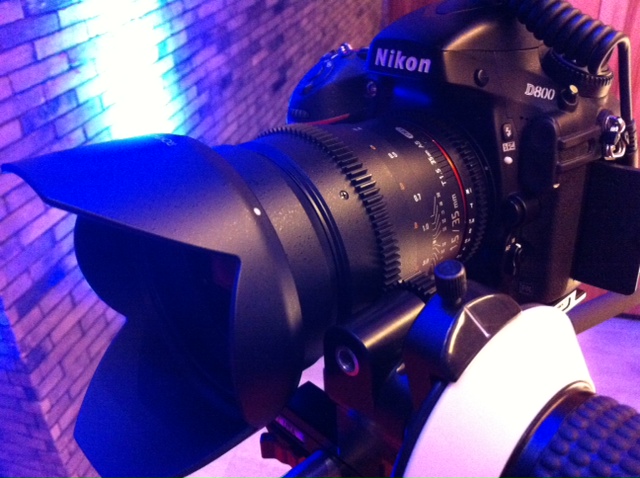
The Samyang/Rokinon lenses have been very popular with DSLR shooters ever since their release. They provided affordable, high quality glass with a fast F stop. The company then went onto release their Cine version of these lenses, all which featured de-clicked aperture and include geared focus and aperture rings. All these lenses are now available to purchase and some, like the 35mm Cine T1.5, seem to be continually back ordered due to there popularity. I own the regular version of the 24mm f1.4 and have found it to be a fantastic lens. They really are tremendous value for money. The 24mm and the 35mm offer a really good alternative to the more expensive brands out there. They don’t tend to be that sharp wide open and you do have to stop them down to get better performance, but that is to be expected for a lens that costs just over $500US. If you put this into comparison, the Zeiss 35mm f1.4 is $1800US and the Canon 35mm f1.4 is $1350. Neither of those lenses I just mentioned has a de-clicked iris or cine gears. While I’m not going to go out on a limb and say that the Rokinon is as good as, say, the 35mm Zeiss, it is pretty close.
I highly recommend these lenses for DSLR shooters and Super 35mm sensor camera users on a budget. With de-clicked aperture and cine gears at a very affordable price they are worth considering. They may not hold their value as much as say a Zeiss, but the low entry cost justifies seriously looking into them.
Sigma: 35 f/1.4, 17-70 f/2.8-4.0 OS & 120-300 f/2.8 OS
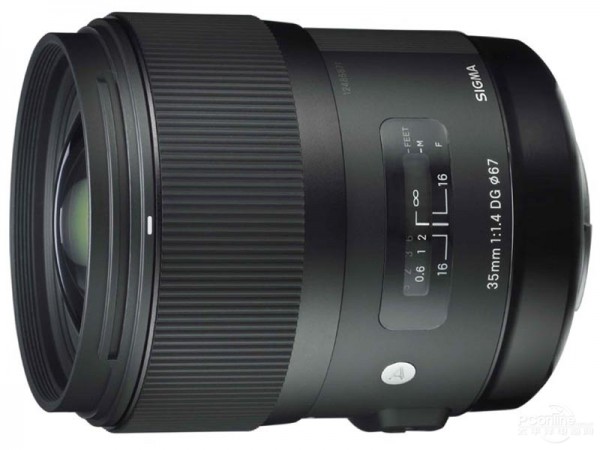
Sigma has also just announced three new lenses to its line-up. The 35mm f1.4 DG HSM offers buyers yet another alternative in the 35mm prime lens category.
This from Sigma: “This Art lens provides photographers with a state-of-the-art alternative to the more conventional 50mm. This lens’ axial chromatic aberration is minimized, which renders a cool and smooth out-of-focus image. At low apertures, it can perform like a wide-angle lens; when opened up to F1.4, it will provide background bokeh and make the subject pop like a mid-range telephoto lens.”
The 17-70mm f 2.8-f4 DC OS HSM is a new macro lens which offers an interesting focal range at reasonably fast aperture. It replaces the original version that was released in 2009. It is only a APS-C size compatible lens so it won’t cover a 5D mkIII but should be fine on something like a 7D. The downside is that the aperture is not constant and the focus travel seems to be quite short – making it harder to manual focus.
The Sigma 120-300mm f/2.8 DG OS HSM by contrast offers a constant aperture across a large focal range of 120mm to 300mm (150mm to 450mm APS-C equivalent). It offers an impressive range but I have no idea about the quality of image this lens will produce.
This from Sigma: “With redesigned mechanics and performance, this Sports lens is an update from its predecessor released in February 2011. This high-performance lens eases difficult shooting conditions by offering a maximum focal length of 300mm and a wide-open aperture of F2.8. This lens, like the other Sports category lenses to come, is dust and moisture resistant, and allows users to adjust the focus speed and the focus limiter via a button on the lens.”
Sigma has long been labelled by some as the poor cousin to Canon and Nikon; the company that always came third in the race. But they do make some great lenses and they are often a cheaper alternative to Canon or Nikon glass with only a small sacrifice in quality. As with any purchase, your budget will dictate the lenses you should be looking at.
Zeiss 55mm f1.4 and new lenses for mirrorless
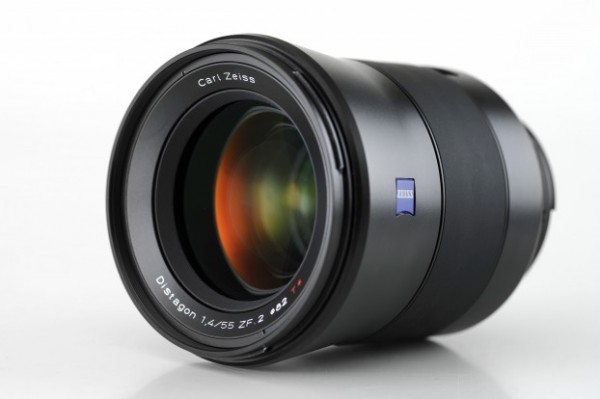
Zeiss have also announced some brand new lenses, including a 55mm f1.4 Distagon prime for DSLRs and mirrorless camera systems. The lenses for mirrorless cameras will incorporate auto focus to take advantage of the super quick focus abilities of this new breed of camera.
There will be a wide angle prime, macro prime and a standard prime coming. The 55mm f1.4 is due out mid-2013. They will be available in Nikon and Canon mount.
These lenses will not be your standard run of the mill ZF or ZE versions. They will be super high performance and a brand new design that, according to Zeiss, will be far superior to current full frame lenses. The lenses will render image performance that to date has only been available in medium format systems. These do sound like they are going to be beautiful lenses, and with a price rumored to be 3000 Euros (just under $4000US) they would want to be. That price puts them right up there with their CP.2 range in terms of price. These lenses will definitely have superior optics and performance though – also check out the huge 82mm front filter thread on the 55mm lens. Whether we see this new design work its way into the Zeiss Cinema line up is yet to be seen. They will initially be available in ZF (Nikon) and ZE (Canon) mounts.
These lenses could well be a very good investment and offer outstanding image performance, but they are definitely for the discerning buyer with deep pockets.
Panasonic 12-35mm f2.8, 35-100mm f2.8 and several new primes

User of the M4/3 lens system are not left out either. Panasonic’s latest 12-35mm f2.8 OIS lens is now shipping, giving the approximately the field of view of a 24-70mm on a full-frame camera. The partner 35-100mm f2.8 finally got an official launch too, effectively becoming a 70-200 for M4/3 users. At the Photokina show Panasonic also announced the future development of 42.5mm f1.2 and 150mm f2.8 fast primes. All these lenses should be good options for the upcoming Panasonic GH3, sadly they will be of less use to users of the M4/3 Blackmagic Design cinema camera – which although it shares the same physical mount does not have the necessary electronic contacts to make use of these new lenses.
So there you have it – a look at some of the new lenses that are out there. Now all that is left it is to lift the sails, matey, and track down that piece of treasure that will give you years of joy and value on whatever camera you choose to put it on.
Smooth sailing.
About Matthew Allard, Aljazeera Senior Field Cameraman, Kuala Lumpur:
Matt has been a Camera/Editor in TV news for more 20 years, previously working for both Channel 9 and Channel 10 in Australia. Twice Network Ten Australia’s cameraman of the year as well as being a Walkley Finalist for outstanding camerawork in 2006 (for coverage of the Cronulla Race Riots) and a Logie Finalist for outstanding news coverage 2006 (Bali 9). He is a multiple ACS (Australian Cinematographers Society) award winner. His Sword Maker story that was shot on a 7D won the prestigious Neil Davis International News Golden Tripod at the 2011 ACS Awards. He has covered news events in more than 35 countries, from major sporting events to terrorist bombings. Based out of the Kuala Lumpur broadcast centre in Malaysia he is an avid user and follower of new technology, shooting stories on HD broadcast cameras, the Sony F3 as well as new Canon DSLRs.




